The tawny owl is the most common of the five resident owl species in the UK and British Isles, with roughly 50,000 breeding pairs. Like the barn, short-eared and long-eared owls, it is a native species (unlike the little owl, which was introduced in the 1800s).
The tawny owl is both distinctive in looks and sound, with a darker colouration than the barn owl, and well-known for its ‘tu-wit, tu who’ calls.
Learn more about the tawny owl, including how to identify, their distinctive call and where to see in the UK in our expert guide by the RSPB:
What is the scientific name of the tawny owl?
The scientific name of the tawny owl is Strix aluco. Another common name for the tawny owl is the brown owl.
The tawny owl is the only species of owl from the Strix genus that is resident in the UK, and the birds in the Strix genus are sometimes known as wood or earless owls – though they are not the only group of owls to not have the tufts of feathers that look like ears.
Other species around the world in the Strix genus included the spotted owl (S. occidentalis), the barred owl (S. varia), the Ural owl (S. uralensis) and the great grey owl (S. nebulosa).
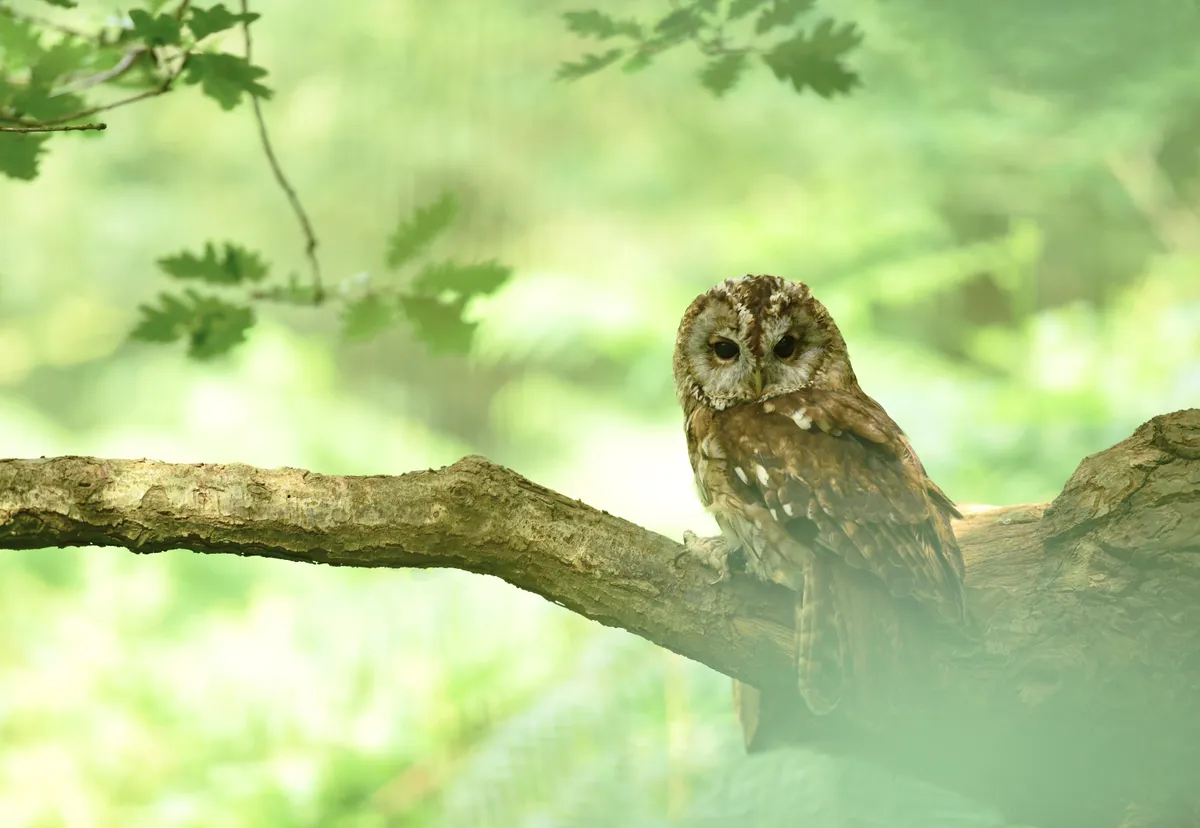
How to identify tawny owls
About the same size as a woodpigeon, it has a ring of dark feathers around its face surrounding deep, dark eyes. Its feathers are mainly reddish brown with a paler underbelly.
How to identify the pellets and feathers of tawny owls
Tawny owl pellets are usually greyer and more obviously ‘furry’ than those of the barn owl. They are medium sized (20-50 mm long) with a bumpy surface. The shape is long and narrow, but irregular and they tend to taper at one end. They are far less solid than barn owl pellets, and often break into fragments as they hit the ground.
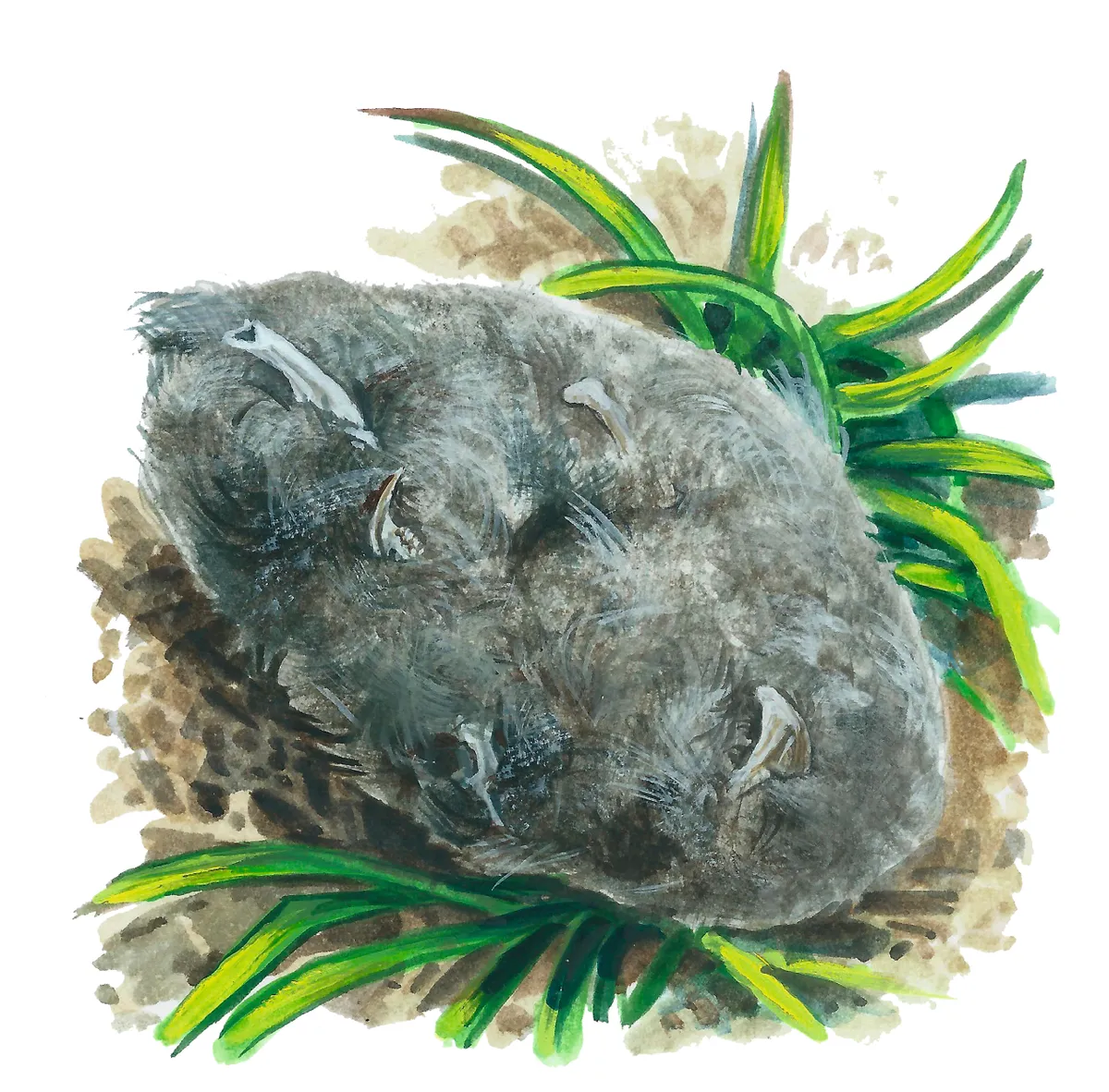
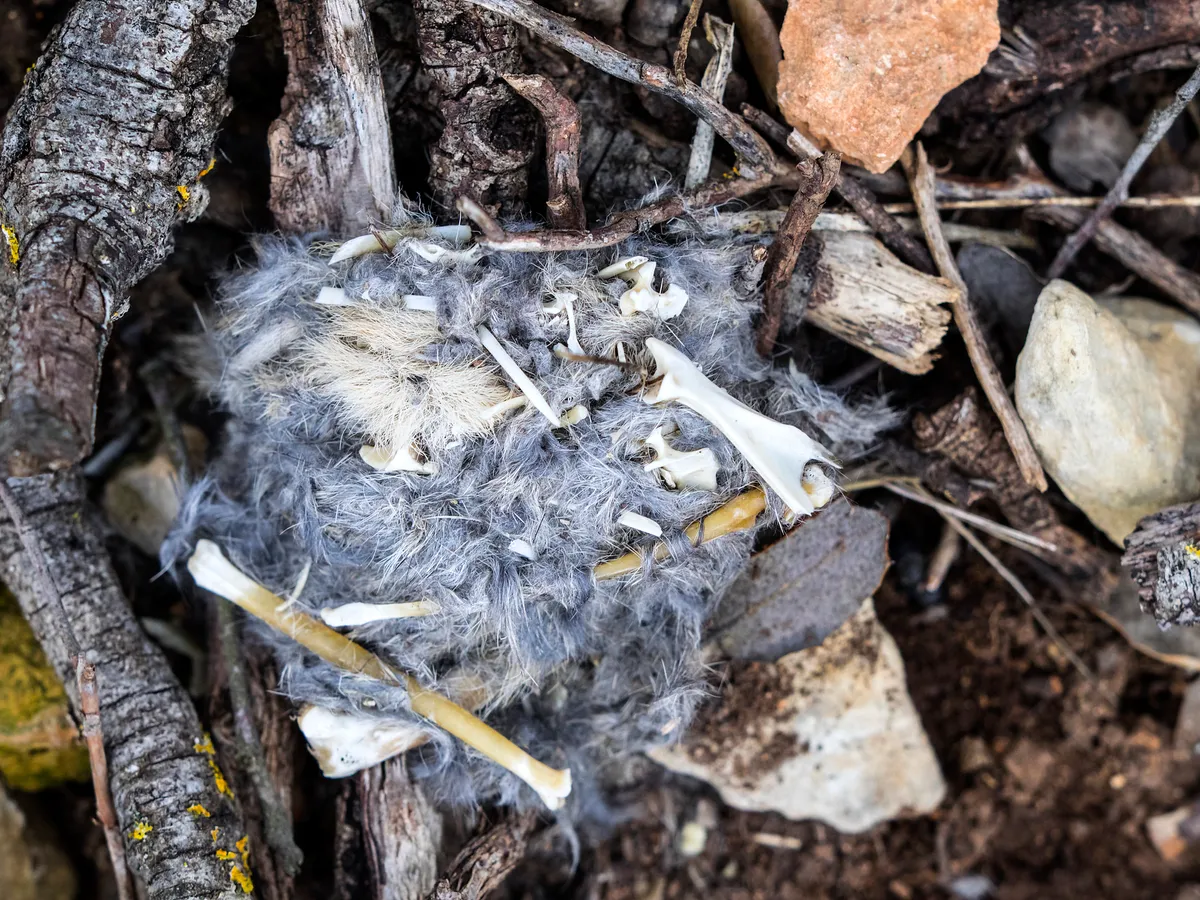
Tawny owl feathers are boldly striped with dark brown, grey brown, and rust brown.
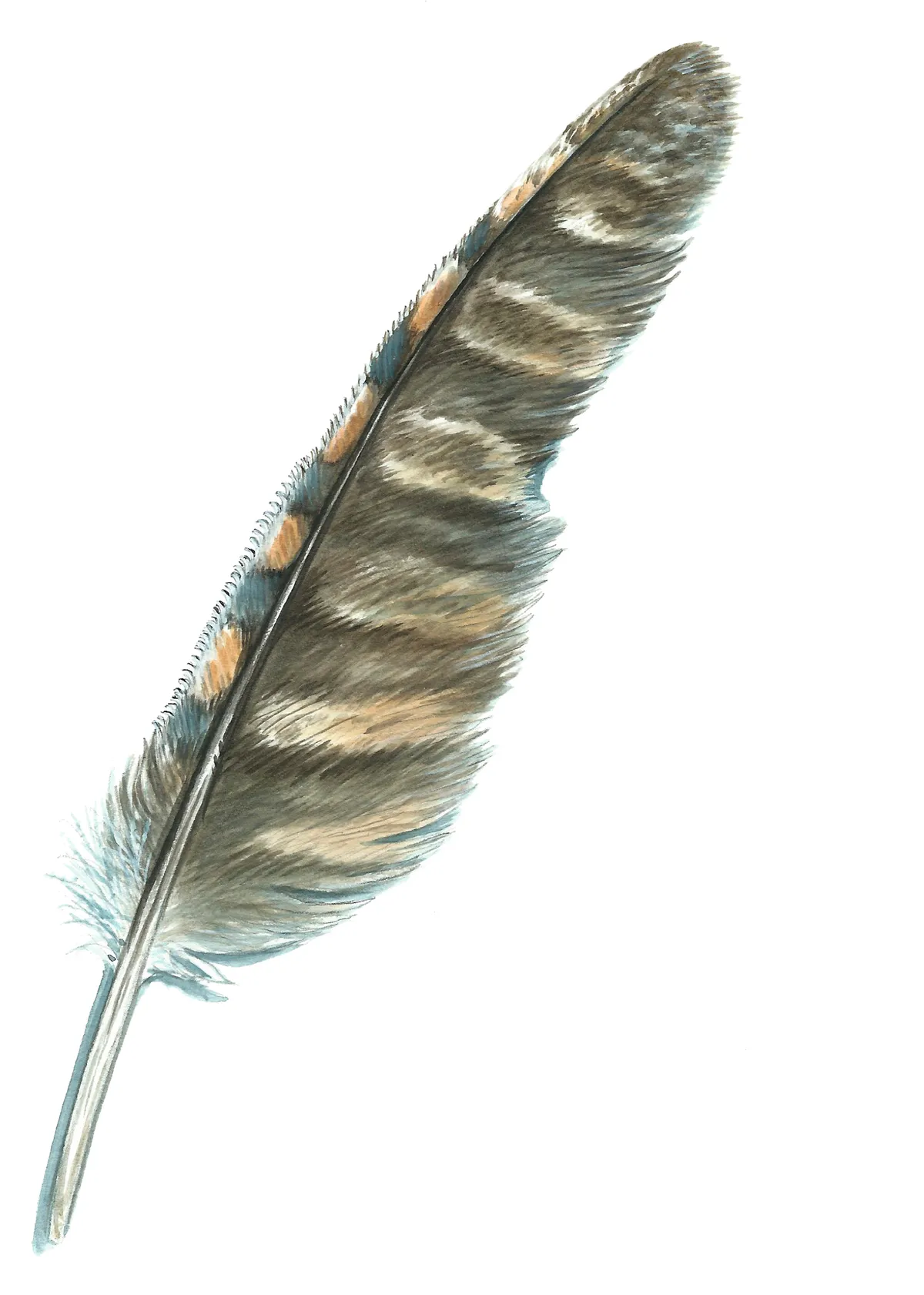
What do tawny owls sound like?
The territorial hooting call of a male tawny owl is probably the most familiar of UK owl calls – the gentle ‘tu-wit, tu who’ followed by a ‘huhuhuhooo’.
The male and female may also use the ‘keewik’ contact call, though this is rare for the male during the breeding season. Females may very occasionally hoot, though theirs is less distinct than the males’.
Why do tawny owls sometimes cut their calls short?
If you hear a tawny call that seems to be missing the final component, it’s probably coming from a youngster that has left its nest and is seeking a territory of its own. Tawny calls take time to develop fully, and juvenile calls also differ in pitch from those of the adults.
Tawny chicks become independent and move away from their natal territories roughly three months after fledging, from August into November. The species breeds early in the year, with March 23 the average ‘first egg date’ here in the UK, and the timing of the breeding season means that territory establishment and calling activity peak from October onwards.
Interestingly, it has been discovered that the pitch of the male call is related to body mass. The larger the male, the longer the final vibrato section of the call.
This Q&A originally appeared in BBC Wildlife Magazine, and was answered by Mike Toms.
Where are tawny owls found?
The tawny owl prefers woodland habitats, but it can also be seen in suburban parks with mature trees, or even gardens.
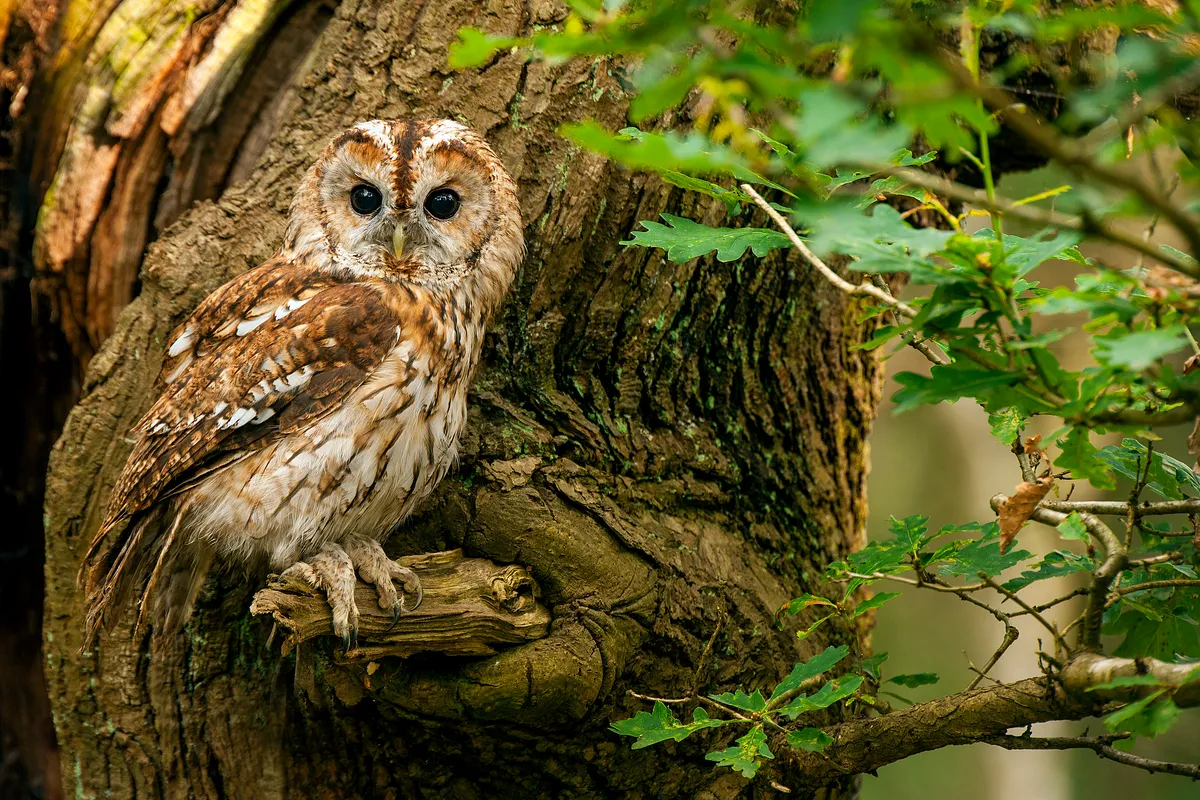
What do tawny owls eat?
The tawny owl isn’t too picky and will eat a range of small mammals and rodents as well as small birds, frogs, fish, insects and worms.
What eats tawny owls?
Like other owls in the UK, there are few species above it on the food chain. Birds of prey will sometimes go after a more vulnerable one, and cats will rarely turn their nose up at a fledgling on the ground.
Songbirds have also been known to ‘mob’ a tawny owl – to scare it away, though, not to eat it!
How long do tawny owls live for?
They tend to live to about four years old, but some records show them living over the age of 20!
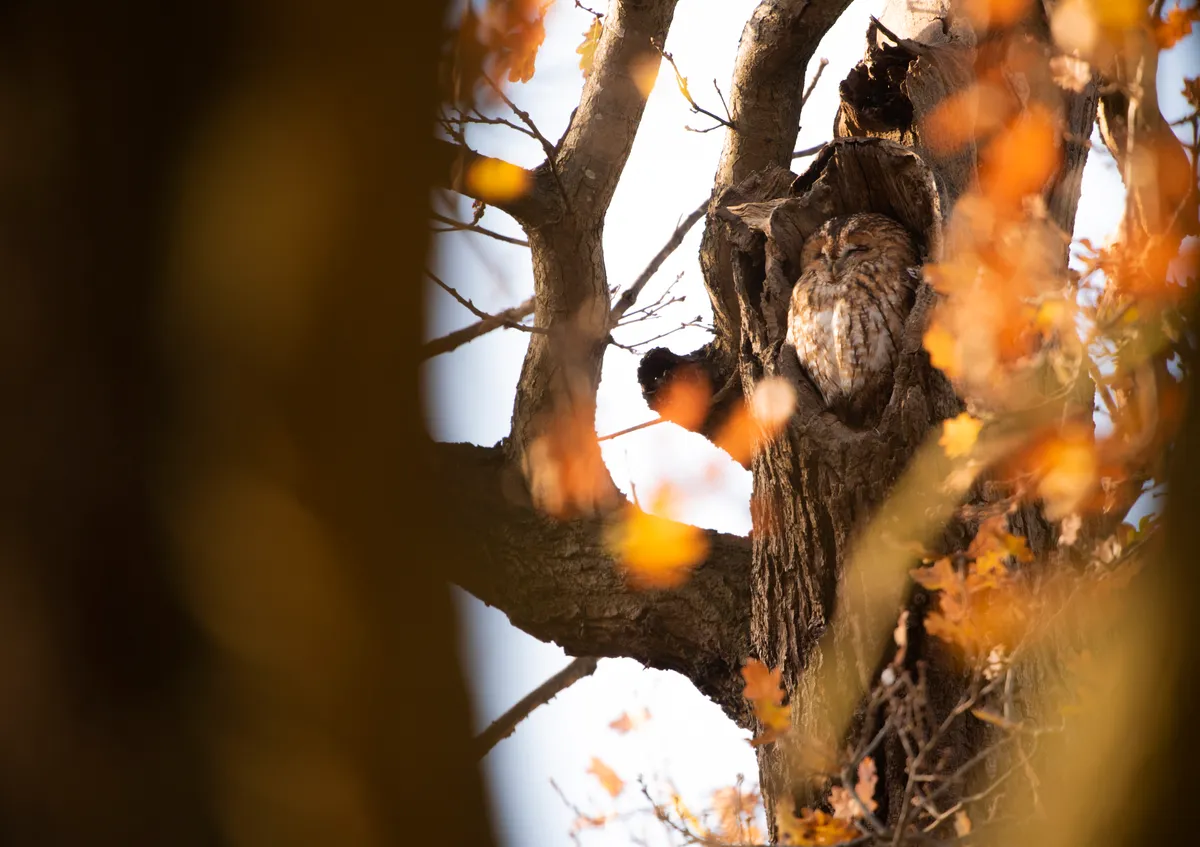
How many eggs do tawny owls lay?
Female tawny owls lay two to three eggs, and normally nest in hollow trees or man-made nestboxes. The chicks will leave the nest after about three weeks when they’re still covered with white downy feathers.
They can sometimes be seen on the ground after their first attempts to fly - but don’t worry ,tawny fledglings are very good climbers and can find their way back up to the nest.
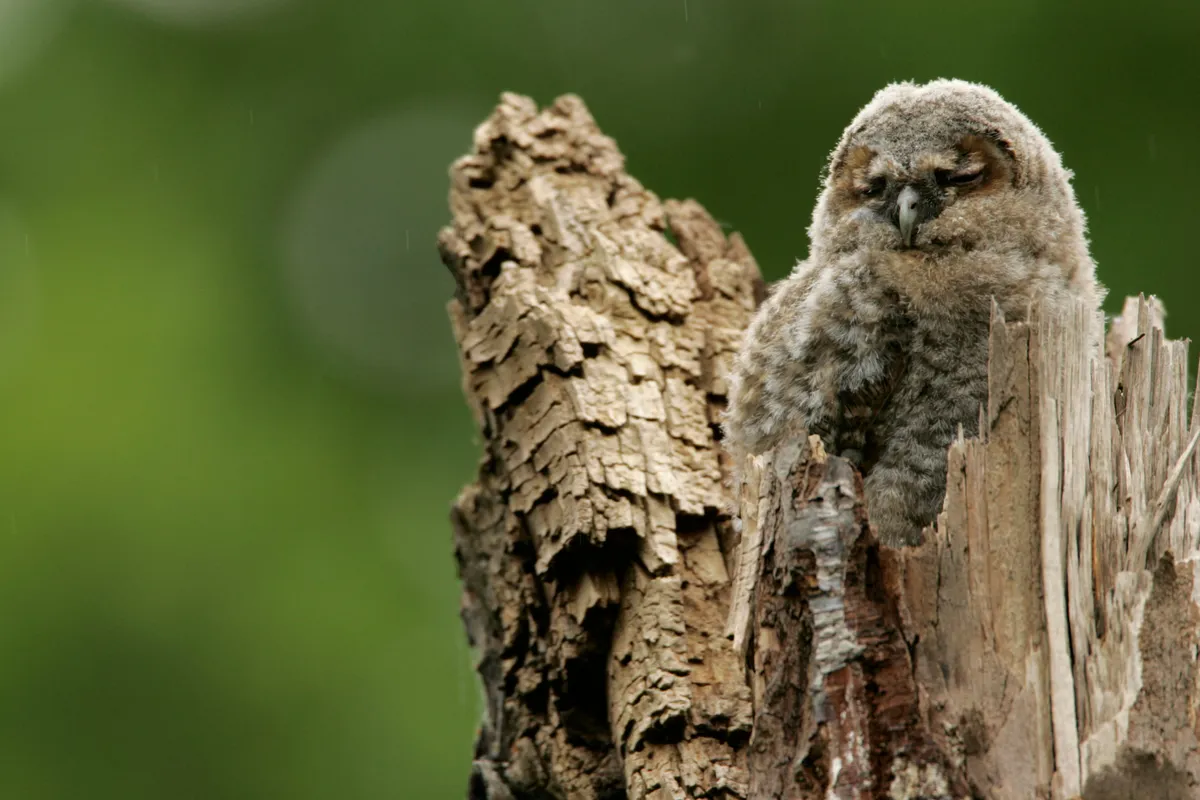
Are tawny owls endangered?
Though it is difficult to monitor nocturnal birds, there are concerns that numbers are declining and it is on the Amber List of conservation concern.
What work is being down to help tawny owls?
The British Trust for Ornithology is gathering information on tawny owls’ population and needs through Project Owl, helping to shine light on how we can help these birds.
How can the public help tawny owls?
As there is less and less woodland available, it can help to put up nest boxes for tawny owls to call their own – you can find some on the RSPB website!
The RSPB is the UK’s largest nature conservation charity, inspiring everyone to give nature a home. Together with our partners, we protect threatened birds and wildlife so our towns, coast and countryside will teem with life once again. We play a leading role in BirdLife International, a worldwide partnership of nature conservation organisations.
Main image: An adult tawny owl roosting during the daytime in a hole in an oak tree in Suffolk, England, UK. © Ben Andrew/RSPB Images
